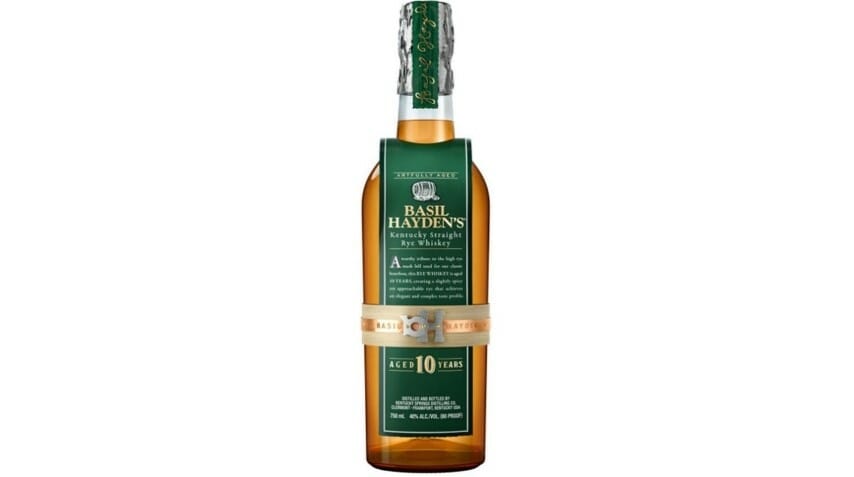Basil Hayden’s 10 Year Old Rye Whiskey
Photos via Beam Suntory
It’s easy to understand why, in theory, the Basil Hayden’s brand exists. Whereas, when I wrote about the new single barrel version of Baker’s Bourbon, I discussed how that particular Beam small batch collection product has often felt like it was trapped in a very small “slice” of the demographic, between the affordability of 100 proof Knob Creek and the luxe trappings of cask-strength Booker’s, Basil Hayden’s and its mere 80 proof have always been much more distinctively positioned. Simply put, this is “fancy” whiskey for people who are new to whiskey, or who prefer their bourbon or rye to be very much on the mild side. Because increases in price are correlated with increases in quality in the consumer’s mind, and because higher-priced whiskeys are almost always stronger in terms of proof, it’s one of the rare avenues for someone with disposable income to drop mid-to-top-shelf coin on an 80-proof product. That’s Basil Hayden’s—its flagship bourbon has always been about maximum accessibility in terms of flavor profile, but at a more premium price point.
On the rye side, on the other hand, the Basil Hayden’s brand has been more of a playground for experimentation for Beam. The “Dark Rye” combines Kentucky and Canadian rye, along with a splash of literal port wine, while the “Caribbean Reserve Rye” does the same with black strap rum. It’s a welcome, additional layer of individuality, rather than simply releasing another straight rye whiskey into the market.
The brand’s new 10 Year Rye, on the other hand, is precisely that—an 80 proof rye that is the mirror image of the brand’s premium 10 Year Bourbon, carrying a similar $60 MSRP. It seems to be Beam betting on the power of the age statement to generate interest as it positions Basil Hayden’s 10 Year Rye as a premium cocktail/sipping rye.
The marketing language chosen by Beam, however, tells much of the true tale. It’s peppered with words and modifiers you simply don’t see often in whiskey advertisements, all of which are implying the brand’s unusually low level of assertiveness. According to the marketing copy, the whiskey features “a touch” of “light” fruit on the nose, and “approachable” spice and “hints” of caramel on the palate. The finish is likewise described as featuring “faint” tobacco. Never have I read through a whiskey description and seen so many terms that all seemed to say “don’t expect too much from me.” Can you even remember the last whiskey description you read that didn’t contain the word “bold”?
Regardless, let’s get to the tasting.